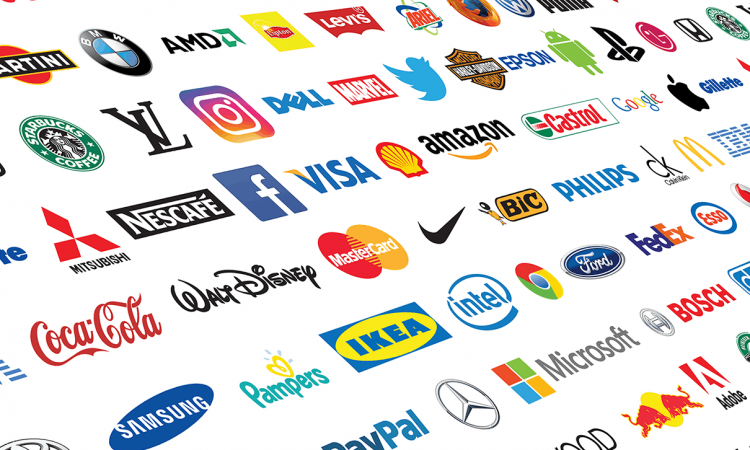Fonts are an integral element of a brand. Your choice of particular fonts will have an enormous impact on the “feel” of your business. If you do it right, your text style can perfectly connect your customers to your brand. The options, or the font trends, are massive. Accordingly, your selection is crucial.
Here, we’ll see typography as a powerful communication tool with an important role and impact on branding and marketing. You can also get the details of the trends around it in the design and marketing world, how to leverage styles and characteristics to create differentiation, as well as how to adapt to the constantly changing trends.
Introduction
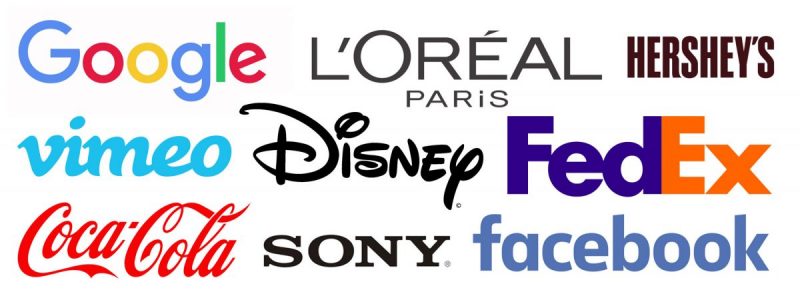
A powerful means in branding and marketing strategies, let’s see how important typography and font trends influence brand identity.
Font Trends – Definition and Their Relevance in Branding and Marketing
Each year, you will likely find some foretells for the typography trends you can expect for your creative design works. The trends keep emerging and evolving since some used fonts are no longer attracting attention or reaching out to your target audiences and their preferences.
We can also ascribe the trends to today’s digital age with the omnipresence of digital devices and their contents. Choosing the right typography – typefaces and fonts – are essential for effective design. Designers use them to bring texts to life, convert a simple message into creative visual experiences, and even bring about emotions.
Fonts are a powerful tool for branding and marketing since they will, if chosen and done right, communicate the intended brand’s message and image. An important and integral element of a brand identity, fonts will help your brand show its best side (its very core) to and connect with the target audience.
For example, we can see the relevance or even the significant impact of fonts used by many big brands. Instead of images, they choose fonts for their logos. Some easily recognizable big names are Coca-Cola, Google, Sony, Honda, IBM, etc.
Can you imagine those brands having different fonts than they have had so far? Will you be able to recognize them easily?
Typography – Its Importance in Shaping Brand Identity
Typically, typography is the procedure or even the art of type (including typeface and fonts) arrangement, especially visually. Typography plays a significant element in shaping brand identity, for it communicates and even transfers a certain brand’s tone, personality, and values. It does it through font, style, and layout selection.
Typography informs the audience of what they are reading and why it has importance to them. It greatly influences how the audiences (or consumers) read and process the information. Also, it attracts and engages them, leading to a clear understanding of the message and, thus, a particular brand identity.
Why is typography important? By and large, the right choice of typography can set the tone of your brand, attract attention, improve readability, portray the professionalism of your brand, and ultimately build brand recognition.
The Role of Font Trends in Branding
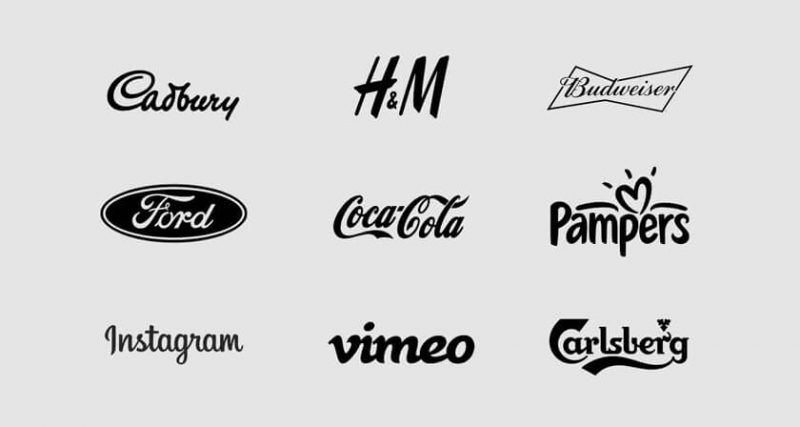
Using fonts not only relates to aesthetics purposes, but they also serve as a powerful tool to relay your brand’s key message and bring about your audience’s emotions afterward. Accordingly, your font choice will make a difference in how the readers perceive your brand identity – tones, values, and personalities.
How Font Selection Reflects Brand Personality and Values
Each font has a shape and line and contains symbols that express certain meanings and associations. Therefore, your font choice will greatly impact how people identify your brand messages and values.
Let’s take a look at an example here. People tend to perceive sans serif fonts with fewer strokes as having a clean, modern, and minimalist look. Meanwhile, other typography trends using display fonts are often seen as more attractive, expressing fun, or even showing personality.
Furthermore, choosing a particular font for your brand is fundamental in shaping your cohesive visual brand identity. Consequently, you must consider important factors like brand personality, target audience, legibility and readability, versatility (flexibility), and uniqueness.
Establishing Brand Consistency through Font Choices
Again, since fonts are not one-size-fits-all in nature, you need to be careful in choosing and matching them to constantly suit your brand message’s purpose, context, and audience. While going for various typeface design trends, you must select fonts consistent with your brand’s personality, tone, and voice.
By using your particular font choice across all platforms or media, you can establish your brand consistency since people can associate it with your brand, as well as recognize and even recall it at other times.
On the other side, your font selection needs to meet the expectation and preferences of your target audience or market. Why? Because they reflect the existing trends. We will discuss this in a separate section further below.
Evoking Emotions and Creating Brand Associations
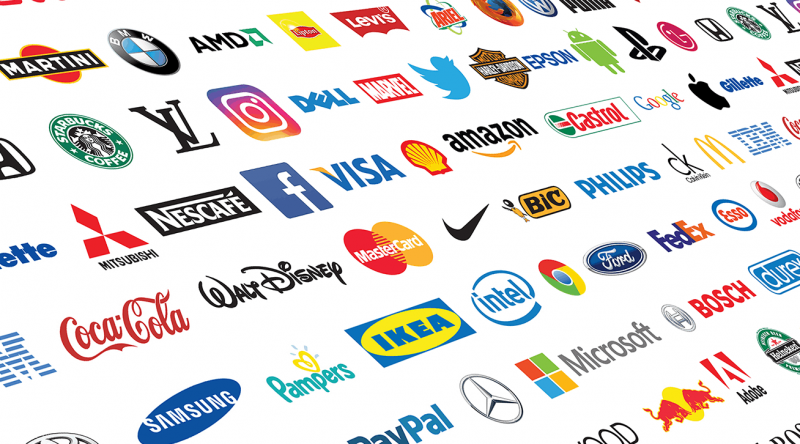
As mentioned earlier, fonts are not only shapes and lines but also have symbols with different values and associations. Indeed, different fonts have different psychological effects on how readers perceive, react, or respond to your brand message. The trigger, of course, will depend on various readers’ contexts, characters, and cultures.
The Psychology of Fonts and Their Impact on Consumer Perception
Different fonts comprise different “feelings,” conveying and depicting both clear and subtle emotions. Even more, some fonts may generate different consumers’ moods or emotions, as well as perceptions and responses.
For example, any font you select from popular font trends can greatly impact the readers or targeted audiences. The selection can influence their feelings about a certain product or service or even the brand’s identity, messaging, etc.
Also, for over 100 years, the world-class Apple brand has successfully established its identity by consistently using particular fonts, such as sans serif font, with its clean and minimalist vibe.
Leveraging Font Styles and Characteristics to Evoke Specific Emotions
You can leverage or customize your fonts according to how your audiences feel. Of course, you need to know your brand personality, your target audience, and the traits (styles and characteristics) of the fonts you want to use.
You can look up popular fonts or contemporary typography trends and the traits that match your brand personality or base them on your audience’s emotions.
For instance, you can go for script fonts to convey a cheerful message full of happiness and excitement. You can modify it with your style and design based on what your brand personality tells or guides you.
Other latest, if not timeless, typography trends you can try to put dynamic style and characteristics to your font choice are fun-yet-functional serif fonts, street-art-inspired typefaces, a mix of 2D design and 3D typography, retro and psychedelic font trends, custom and variable fonts, and more.
Typography as a Communication Tool
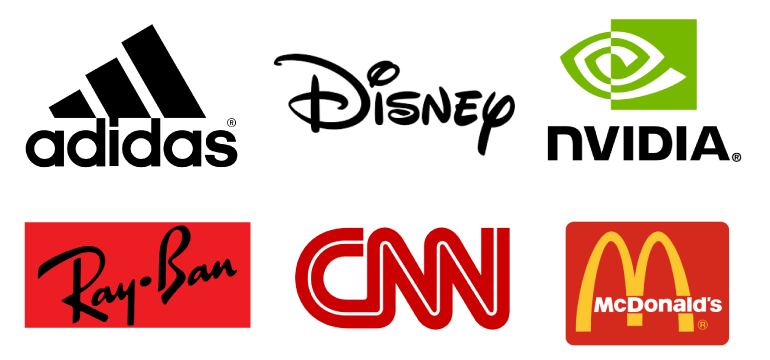
Once again, typography is your selection of typefaces and fonts in your visual communication. It is the technique to make your text legible, readable, and understandable.
Conveying Brand Messages and Values through Font Choices
Your choice of branding fonts has a crucial impact on your brand’s visual personality. They are one of your communication tools that ultimately can make or break the whole impression or image you want to pursue.
A big part of communicating via graphic design and typography (including logo design font trends) affects how people perceive your brand message as it encompasses its own visual voice or personality.
The right fonts will help you effectively deliver your message or the very core of your brand to your targeted audience. Conversely, some other poor choices of fonts may lead to misperception and even confusion.
What is more? Here are some useful tips for selecting the right fonts for your brand or other creative works.
- Consistency across all materials
- Pick at least two (for headings and paragraph texts)
- Know well your brand personality
- Make it legible – easy to read and understand
- Your font choices should look good together and matched
- Ask others’ opinions or feedback
Enhancing Readability and Legibility for Effective Communication
If you follow the branding font trends, the fonts you choose must meet at least three requirements: flexibility, multiple font weights, and legibility.
Flexibility means your fonts work flexibly well for different mediums (print, web, and mobile). Your fonts must also have multiple font weights – regular, light, bold, semi-bold, etc. They are essential to create a clearer text hierarchy, namely different font weights for headings, body text, subheadings, quotes, etc.
As for legibility and readability, your fonts need to be legible or easy to read. It is one of the critical elements to communicate and deliver your message more effectively. For example, poor typography can lead to difficulty reading and understanding the message. Meanwhile, an easy-to-read and cleaner typeface will result in more audience engagement in absorbing the intended message.
Differentiation and Brand Recognition
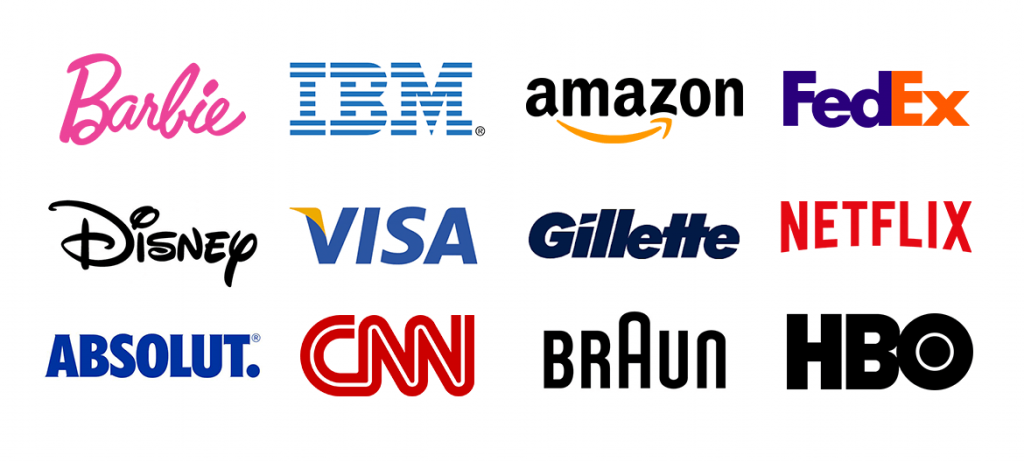
In addition to being a communication tool, typography is also a powerful tool in creating differentiation and, thus, brand recognition.
Using Unique and Distinctive Fonts to Stand Out from Competitors
You can say that choosing fonts can be subjective; still, they are all about context and psychology – everything.
Since perception is crucial, poor font selection may lead your brand message to suffer from miss-impression. It can further confuse the audience and even degrade your brand personality.
On the other hand, choosing the right one, especially the unique one, will successfully deliver a clearer and more positive message visually. It will make your text not only more legible but also distinctive. It helps your brand stand out from the competition.
The options are abundant, ranging from minimalist font trends to handwritten font trends. Or else, you can go for less common fonts or even custom ones that will set your brand apart from the crowd.
Let’s talk briefly about creating your own custom font or typeface. It can be one of the creative ways to build a unique visual brand identity. The custom font gives designers complete control over their designs, perfectly aligning them with brand personality.
By having a custom font, any business or brand can be so recognizable, thus, distinguish itself from the crowd (differentiation). A custom font is mostly protected under trademark law and gives extra protection and security.
You can take inspiration from popular examples of big brands with their distinct custom typefaces or fonts. To name some of them are Google with Google Fonts, Apple with San Francisco font, Netflix with Netflix Sans, Samsung with SamsungOne font, and many more.
Building Visual Consistency for Brand Recognition
The choice of font is essential in generating brand consistency as it will help your brand build a strong connection with your audience, leading to their confidence, trust, and, finally, brand recognition.
A particular or distinctive font consistently across different mediums or platforms will help customers’ association. They will easily relate a particular font with your brand, distinguishing and remembering your brand even in the future.
Simply put, when you think about your favorite or popular brands and their logos, and why they are easily recognizable, it is the work – or the magic – of typography. Why so? It’s none other than designers who creatively use typography for breathing life into simple texts, fonts, or logos to give meaningful visual experiences to the readers.
Font Trends in Marketing Collateral
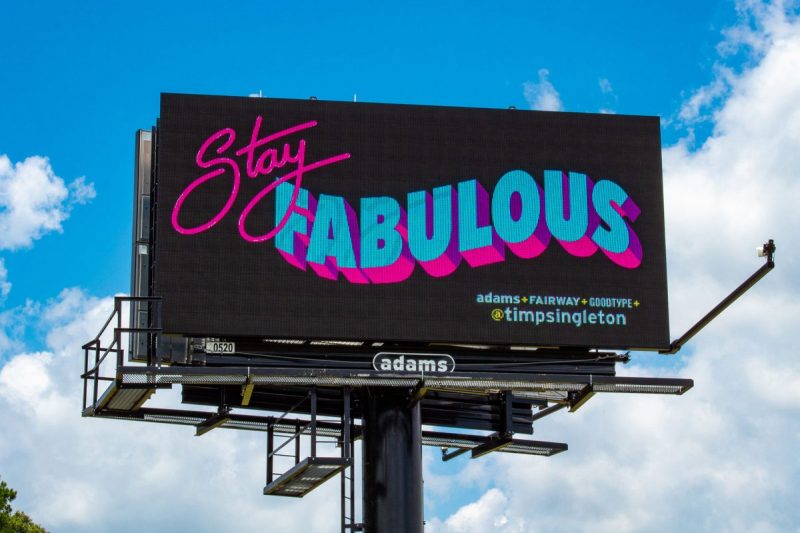
When typography is used as a tool to build brand recognition, it also belongs to the marketing efforts. It is an important ingredient in marketing as it will create a strong relationship with the audience, relay messages, and evoke emotions.
The right choice of typography, including fonts, sizes, colors, and spacing, will help you create the intended tones or moods of your marketing campaigns. They will successfully communicate your brand personality by generating a consistent and professional image. Ultimately, they will distinguish your brand from competitors, improve brand recognition, and thus, customer loyalty.
Now, how do you execute it? There are at least two ways here. You can integrate the latest font trends in your marketing and advertising efforts. Or else, you can align your choice of typography with the preferences of your target audience.
Incorporating Font Trends in Advertisements, Brochures, and Websites
Indeed, the right choice of typeface can be your key to powerful marketing or advertising materials, well-built websites, well-designed brochures, sharp-looking billboards, etc. In overall, it is crucial for creating a solid brand identity.
Still, you will need more than just a particular font in graphic design to give you the anticipated result. You need to be aware of the new graphic design font trends constantly evolving in typography.
Also, any designer should consider and incorporate those emerging trends in their creative works. One of the key reasons is that those trends unconsciously reflect the changing in the audience preferences and mood as well.
According to designhilll, the new trends you can expect and experiment with in 2023 are, among others, the use of hand-drawn fonts, the return of serifs, the use of fonts with outlining, the left-aligning text, the comeback of color fonts, and highlighted letters.
Aligning Typography Choices with Target Audience Preferences
Whether physically or digitally, you need to choose your typography carefully and strategically integrate it to reflect your brand personality successfully. Since the latest trends indicate today’s people’s changing preferences or moods, you have to select suitable fonts to deliver your brand message to your target audience.
Citing design.tutplus.com, the font trends, including the digital font trends of 2023, will revolve around eclectic and energizing moods, variety, and unconventionality (eccentricity) across web, print, branding, cinema, social media, etc.
Those trends allow designers to be free and more creatively experimental with various fonts, typefaces, and typography. You can expect bolder and more individualist approaches since popular culture tends to be more diverse, eclectic, and inclusive.
By aligning your typography choice with your target audience preferences, it will help you to create and convey the intended message and your brand personality. As a result, you can win your target or even prospective customers’ trust and confidence in your brand. Even more, it will lead to their buying decision.
Adapting to Changing Font Trends
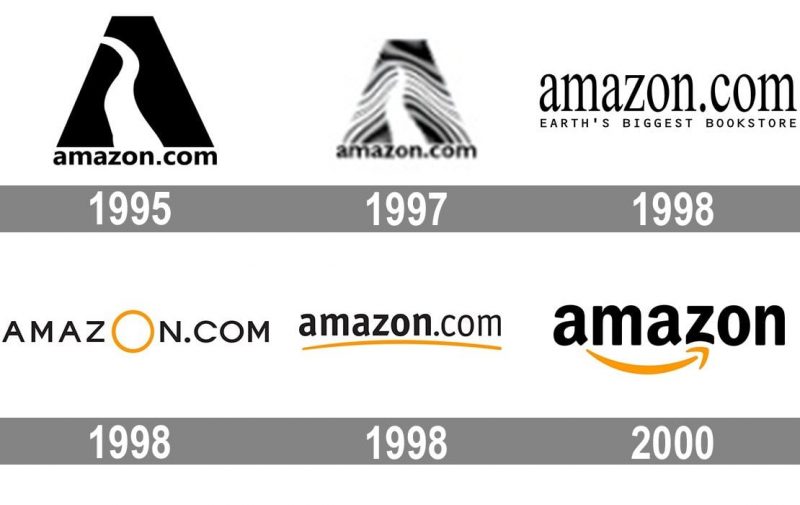
Typography trends, including UI/UX font trends and visual design font trends, are continuously evolving. We can ascribe those trends to technological, aesthetic, and also cultural influences. The question is how to keep pace with the most up-to-date trends for your branding efforts.
Staying Updated with the Evolving Typography Trends
There are several ways to keep up with the constantly changing trends in typography. The first is to look up to and follow the leaders in the industry and their success stories. They may include magazines, design agencies, award-winning projects, blogs, etc.
The second is to look for new fonts – exploring and experimenting with them. You can browse some platforms offering their latest fonts, such as Adobe Font, Google Font, and the like. Also, as the third way, you can learn from professionals (the experts like designers or typographers) by attending their workshops, online courses, etc.
Or else, you can participate in various groups, forums, or events (the community) where you can meet typography experts, practitioners, enthusiasts, or even critics. Last but not least, you can consider the context of your current brand identity and see its relations with recent trends, situations, audiences, or culture.
Balancing Current Trends with Timeless Font Choices
In addition to the above ways to keep updated with the latest trends, you also need to always stay creative. Don’t be hesitant to experiment with your very own fonts and expressions or use timeless fonts.
Yes, there are classic fonts every designer should have since they can deliver substance and style without being out-of-date. They have already tried, tested, and proven that they can create ageless elegance while staying on trend – a good balance between timeless classiness and temporary style.
If you are looking for examples or inspirations of timeless font staples, InDesignSkills offers some classic favorites. You can find familiar or still-used typefaces like Open Sans, Gill San, Orpheus, Gotham, Franklin Gothic, Canela, Brandon Grotesque, and more.
They are indeed unfailing even when faced with the cutting-edge digital era of web design. Also, you can go for the dynamic typography trends mentioned earlier in the section on leveraging styles and characteristics to evoke specific emotions.
Conclusion
Playing a significant role in building a strong brand identity, typography is a powerful and effective marketing material. A vital part of graphic design, typography is arranging written language – typeface and font styles and sizes – easy to read and understand and appealing.
To put it another way, typography is the art of making people perceive a piece or a message in branding. Therefore, the right typography can greatly impact visual hierarchy, develop a more balanced sense, and even set a particular tone or mood. It will be a good guide for readers’ eyes over the design and effectively deliver the intended message.
Other powers of typography trends in marketing are communicating brand personality, improving brand recognition, reflecting professionalism, enhancing legibility and readability, evoking emotions, increasing engagement, and differentiating a brand from competitors.
Yes, the right font choice can help any business connect its target audience with the brand, especially in today’s fast-moving digital world. There is a need to understand the so-called psychology of fonts, knowing the traits of each font or typeface that will have a specific “feel” to your text or design.
To sum up, businesses and designers need to keep up with the changes in the situation, audience preferences, and font trends. In addition to staying updated, they also need to choose the right font to suit their brand personality carefully, creatively balance the latest trends with timeless ones, or create their own custom typefaces.
